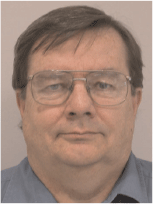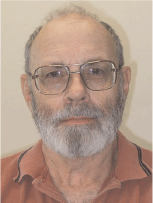The times they are a-changin’: Australian biozones, petroleum basins, and the international geologic time scale (GTS) 2012
Tegan Smith A , John Laurie A , Lisa Hall A , Robert Nicoll B , Andrew Kelman A and James Ogg CA Geoscience Australia.
B Geoscience Australia and Australian National University.
C Purdue University.
The APPEA Journal 54(2) 473-473 https://doi.org/10.1071/AJ13046
Published: 2014
Abstract
The international Geologic Time Scale (GTS) continually evolves due to refinements in age dating and the addition of more defined stages. The GTS 2012 has replaced GTS 2004 as the global standard timescale, resulting in changes to the age and duration of most chronological stages. These revisions have implications for interpreted ages and durations of sedimentary rocks in Australian basins, with ramifications for petroleum systems modelling. Accurate stratigraphic ages are required to reliably model the burial history of a basin, hence kerogen maturation and hydrocarbon expulsion and migration. When the resolution of the time scale is increased, models that utilise updated ages will better reflect the true basin history. The international GTS is largely built around northern hemisphere datasets. At APPEA 2009, Laurie et al. announced a program to tie Australian biozones to GTS 2004. Now, with the implementation of GTS 2012, these ties are being updated and refined, requiring a comprehensive review of the correlations between Australian and International biozonation schemes. The use of Geoscience Australia’s Timescales Database and a customised ‘Australian Datapack’ for the visualisation software package TimeScale Creator has greatly facilitated the transition from GTS 2004 to GTS 2012, as anticipated in the design of the program in 2009. Geoscience Australia’s basin biozonation and stratigraphy charts (e.g. Northern Carnarvon and Browse basins) are being reproduced to reflect the GTS 2012 and modified stratigraphic ages. Additionally, new charts are being added to the series, including a set of onshore basin charts, such as the Georgina and Canning basins.

Tegan E. Smith is a stratigrapher with the Basin Resources Group at Geoscience Australia. She completed a BSc at the University of Tasmania with a double major in Earth Science and Zoology, then joined The Australian National University (ANU) for her honours year. In 2007, she undertook a PhD at the ANU then joined Geoscience Australia in 2011. She started her present position with the Basin Resources Group in early 2012. Member: PESA and the PESA-ACT committee. |

John R. Laurie is a principal research scientist in Geoscience Australia and has a BSc (Hons 1) in geology from the University of Newcastle and a PhD in palaeontology from the University of Tasmania. After a brief period as a regional mapper in the Northern Territory Geological Survey in Alice Springs, he joined BMR (now Geoscience Australia) in 1982 as a palaeontologist in the Timescales project. He has published over 80 research papers and has been co-author of two volumes of the Treatise on Invertebrate Paleontology. John is also editor-in-chief of the Memoirs of the Association of Australasian Palaeontologists. |

Lisa Hall works as a research scientist in Geoscience Australia’s Energy Division. Her present research is focused on unconventional hydrocarbon resource assessments and petroleum systems, modelling in a variety of Australian basins. Lisa holds an MSc in geology and geophysics from Cambridge University (1999) and a PhD in structural geology and neotectonics from Oxford University (2003). |

Robert (Bob) Nicoll was educated in the US and obtained his PhD from the University of Iowa in 1971. He worked for the Bureau of Mineral Resources/Australian Geological Survey Organisation for 28 years and is a school visitor in the Research School of Earth Sciences at the Australian National University. He was contracted to Geoscience Australia, developing the Australian datapack for the TimeScale Creator and to work with high precision dating of zircons, using CA-IDTIMS, in tuff beds of the Middle Permian to Early Triassic in eastern Australian Basins. His principal research interest involves all aspects of conodont biostratigraphy and palaeobiology from the Cambrian to the Triassic. He is continuing the CA-IDTIMS studies, especially in the Sydney, Gunnedah and Bowen basins. |

Andrew P. Kelman is a biostratigrapher with the Basin Resources Group in the Energy Division at Geoscience Australia. He completed a BSc at Australian National University in 1993, and an Honours degree in Paleontology and Ecostratigraphy at Macquarie University, Australia (2005). He joined Geoscience as a Palaeontology Technician in 1994, moving into his present position with the Timescales project in 2006. His recent work is focused on biostratigraphic contributions to the acreage release process and compiling biostratigraphic charts, covering the Australian offshore and onshore basins. |

James (Jim) Ogg is a professor in Earth and Atmospheric Sciences at Purdue University in Indiana, USA, with research specialties ranging from Mesozoic ocean history and climate cycles to stratigraphic databases. Since completing his PhD at Scripps Institution of Oceanography, California (1981), he has served on 10 DSDP and ODP legs as a paleomagnetist, sedimentologist or logging scientist. He was secretary general of the International Commission on Stratigraphy (2000–2008) and coordinated the ICS stratigraphy information service (2008–2012). He was co-editor of A Geologic Time Scale 2004, lead author for the Concise Geologic Time Scale (2008) and co-editor of The Geologic Time Scale 2012. Jim Ogg coordinates Purdue’s TimeScale Creator system for earth history visualisation and reference global/regional datasets (tscreator.org). His collaboration with Geoscience Australia on time scale databases and visualisation software began in 2007, during a sabbatical in Canberra and continues with anther sabbatical in late 2014. |
References
Gradstein, F.M., Ogg, J.G., and Smith, A.G., 2004—A Geologic Time Scale 2004. UK: Cambridge University Press.Gradstein, F.M., Ogg, J.G., Schmitz, M.D., and Ogg, G.M., 2012—The Geologic Time Scale 2012. Volumes 1 and 2. UK: Elsevier BV.
Laurie, J.R., Mantle, D.J., Nicoll, R.S., and Ogg, J. (2009). Customising the Geological Timescale for use in Australasia. The APPEA Journal , 49.
Mantle, D.J., Kelman, A.P., Nicoll, R.S., and Laurie, J.R., 2010—Australian Biozonation Chart. Canberra: Geoscience Australia.
Mattinson, J.M. (2005). Zircon U-Pb chemical abrasion (“CA-TIMS”) method: Combined annealing and multi-step partial dissolution analysis for improved precision and accuracy of zircon ages. Chemical Geology 220, 47–66.
Riding, J.B., Mantle, D.J., and Backhouse, J. (2010). A review of chronostratigraphical ages of Middle Triassic to Late Jurassic dinoflagellate cyst biozones of the North West Shelf of Australia. Review of Palaeobotany and Palynology 16, 543–75.
Smith, T.E., Edwards, D.S., Kelman, A.P., Laurie, J.R., Mory, A.J., Nicoll, R.S., and Ogg, J.G., 2013—Biozonation and stratigraphy of the Canning Basin: updated to the 2012 time scale. 53rd APPEA Conference and Exhibition, 26–2. May 2013. Brisbane, Australia.
Young, G,C., and Laurie, J.R., 1996—An Australian Phanerozoic Timescale. UK: Oxford University Press.


